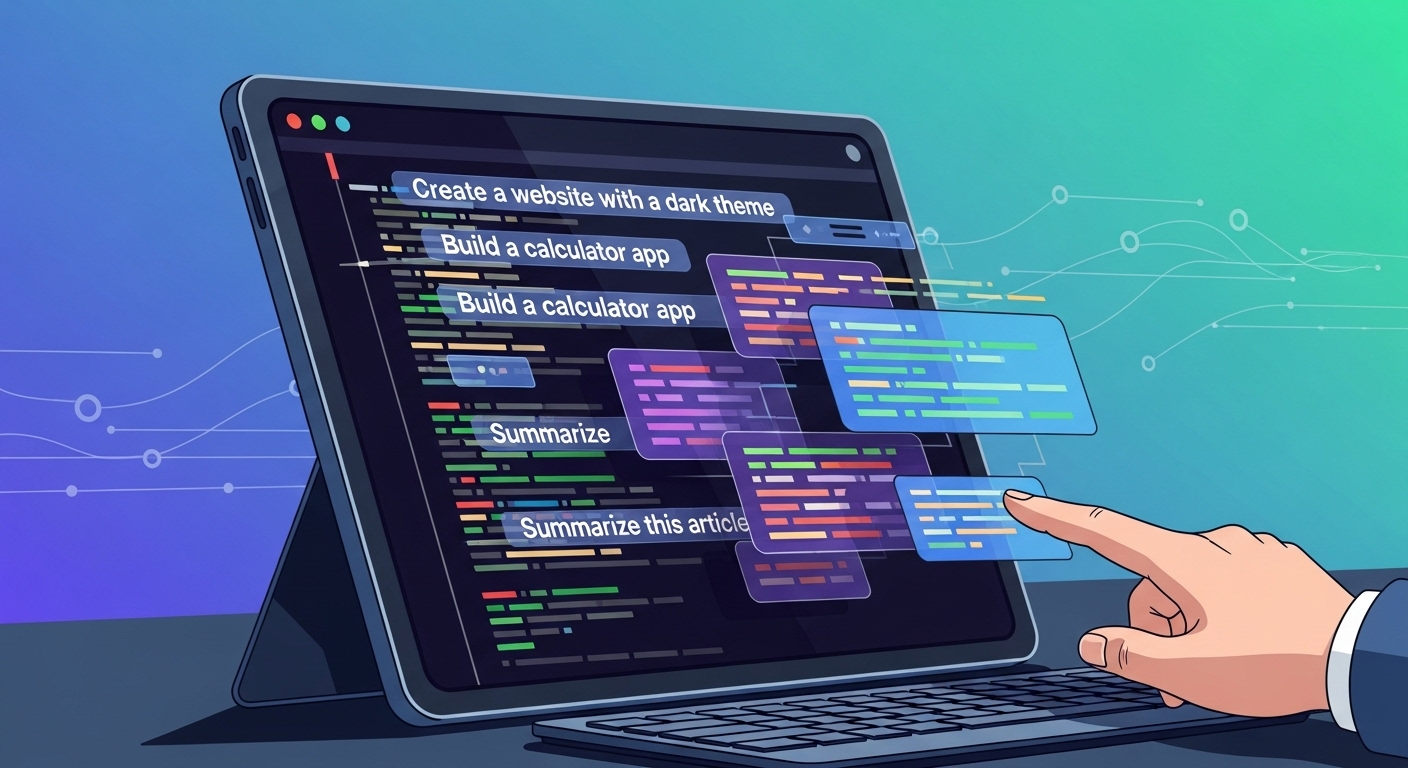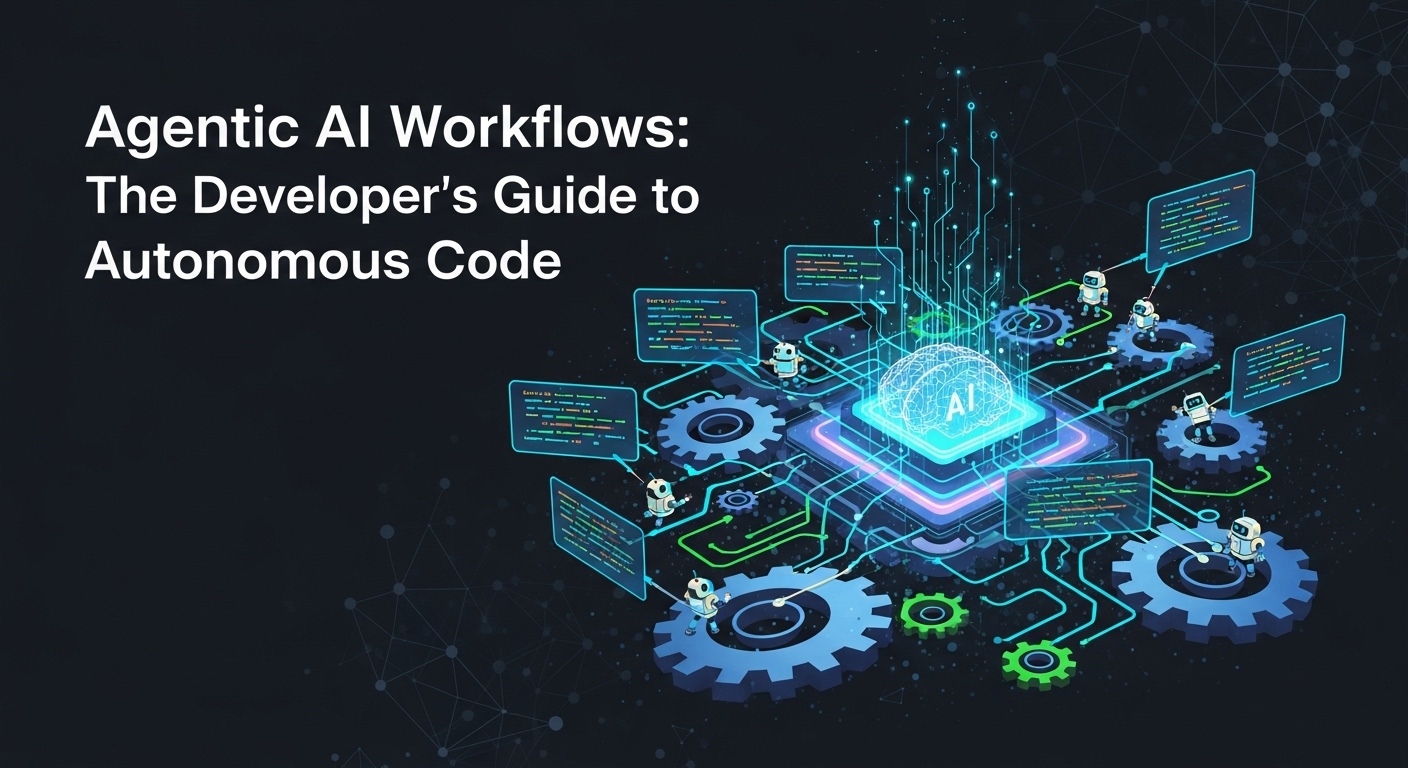The AI Revolution Just Got a Major Upgrade
For the past few years, the world of software development has been captivated by the rise of Large Language Models (LLMs). Tools like OpenAI’s ChatGPT and GitHub Copilot have fundamentally changed how we write code, debug issues, and learn new technologies. They are incredible at understanding and generating text and code, acting as a super-powered autocomplete and a knowledgeable conversational partner. But what if AI could go beyond just *talking* about the work and actually *do* the work? That’s the promise of the next major leap in artificial intelligence: Large Action Models, or LAMs.
If LLMs are the brilliant conversationalists, LAMs are the skilled practitioners. They represent a paradigm shift from generating content to performing actions. This evolution is set to be one of the most significant transformations in the field of AI for developers, promising to automate complex workflows, streamline testing, and build a more intuitive bridge between human intent and machine execution. Get ready, because the way we build software is about to change all over again.
What Exactly Are Large Action Models (LAMs)?
While the term might be new to some, the concept is an intuitive evolution of where AI has been heading. A Large Action Model is an AI system designed to understand human goals expressed in natural language and then translate those goals into a sequence of actions on a computer’s graphical user interface (GUI) or through APIs.
From Language to Action: The Key Distinction
The fundamental difference between an LLM and a LAM lies in their primary output. An LLM’s goal is to predict the next most likely word in a sequence. This allows it to write essays, generate code snippets, and answer questions. A LAM, on the other hand, aims to predict the next most likely *action* in a sequence. These actions aren’t just words; they are clicks, key presses, API calls, and interactions with software components.
Think of it this way:
- You can ask an LLM: “How do I create a new repository on GitHub and push my project to it?” It will give you a perfect, step-by-step list of command-line instructions.
- You can ask a LAM: “Create a new repository on GitHub named ‘My-Awesome-Project’ and push my current local folder to it.” It will open the browser, navigate to GitHub, click the ‘New repository’ button, type in the name, execute the necessary git commands in the terminal, and report back when it’s done.
This ability to operate software on a user’s behalf is the defining characteristic of a LAM.
How LAMs Learn: The ‘Look and Learn’ Approach
LAMs are trained on vast datasets of human-computer interactions. Instead of just scraping text from the internet, they learn from screen recordings, interaction logs, and demonstrations of people completing tasks. They learn to associate a user’s command (e.g., “Add this item to my shopping cart”) with the visual elements on the screen (the product image, the ‘Add to Cart’ button) and the sequence of clicks and inputs required to achieve that goal. This is often referred to as imitation learning or learning from demonstration, where the model essentially ‘watches’ how a human does something and learns to replicate it across different applications and scenarios.
The Real-World Impact: Why LAMs Matter for Developers
The implications for the software development lifecycle are immense. LAMs aren’t just another tool; they are a new category of collaborator that can handle tasks previously reserved for human developers. Here’s where we can expect to see the biggest impact.
Automating the Mundane: Code Generation on Steroids
We’re already familiar with AI generating code snippets. LAMs take this to a whole new level. A developer could task a LAM with scaffolding an entire application. For instance: “Set up a new React project using Vite, install Tailwind CSS and Axios, create a basic component structure with a header, footer, and main content area, and initialize a Git repository.” The LAM would then execute all the necessary terminal commands, create files, and write the boilerplate code directly in the IDE, accomplishing in minutes what might take a human developer half an hour or more of setup.
Supercharging UI/UX Testing and Automation
End-to-end testing is a critical but often tedious part of development. Traditional automation scripts (using tools like Selenium or Cypress) are powerful but brittle. If a developer changes a button’s ID or class name, the test script breaks. LAMs offer a more resilient solution. Because they understand the UI visually and semantically, you can give them instructions like, “Go to the login page, enter the test user’s credentials, and verify that the dashboard loads successfully.” The LAM can find the ‘username’ field and ‘login’ button regardless of their underlying code, just as a human would. This makes test automation faster to create and much more robust.
Bridging the Gap Between Design and Development
The handoff from design to development is often a source of friction. A LAM could streamline this process dramatically. Imagine feeding a LAM a design file from Figma and saying, “Build a responsive HTML and CSS prototype based on this ‘Homepage’ artboard.” The model could analyze the design components, layout, and styling, and generate the corresponding front-end code, significantly accelerating the process of turning a visual concept into a functional reality.
The Ultimate Pair Programmer?
The concept of an AI pair programmer extends beyond simple code completion. With a LAM integrated into an IDE, a developer could issue high-level commands. “Refactor this legacy class into a functional component using React Hooks.” or “Find the source of the null pointer exception in this module and apply a fix.” The LAM would navigate the codebase, analyze the context, perform the refactoring, and even run tests to ensure it didn’t break anything—all while the developer supervises and provides strategic direction. This elevates the role of the developer from a pure coder to an architect and system overseer.
Leading LAMs and Tools You Should Know
While the field is still nascent, several key players and projects are paving the way for the LAM revolution.
Rabbit R1 and the Popularization of LAMs
The Rabbit R1 device brought the term ‘Large Action Model’ into the mainstream. Their vision is to create a universal controller for all your apps, a single interface you can talk to that will then operate your other apps for you. While a hardware-based approach, the underlying AI principles are what’s driving the excitement in the AI for developers community.
Adept AI’s ACT-1
Adept is a major research lab in this space, and their ACT-1 model is a powerful demonstration of a LAM’s capabilities. It’s a transformer model that takes natural language commands and acts on them within common enterprise software like Salesforce or Google Sheets. It shows the potential for LAMs to automate complex business workflows, a domain developers are often tasked with supporting.
OpenAI’s Agent-Based Ambitions
While not explicitly using the ‘LAM’ moniker, OpenAI’s research into ‘agents’ points in the same direction. The ability for GPT models to use tools and browse the web are early steps toward an AI that can take action. The custom GPTs and the GPT Store are a platform for creating specialized agents that can perform tasks, and it’s a clear signal of where the industry leader is heading.
Challenges and the Road Ahead
The path to a LAM-powered future is not without its obstacles. Developers need to be aware of the challenges that must be overcome:
- Security and Permissions: Giving an AI model control over your applications is a significant security risk. How do you grant it the necessary permissions to do its job without opening up vulnerabilities? Creating sandboxed environments and robust permission models will be critical.
- Reliability and Determinism: LAMs can sometimes ‘hallucinate’ actions just as LLMs hallucinate facts. For critical tasks, developers need a high degree of reliability. Ensuring the LAM performs the correct sequence of actions every single time is a major technical hurdle.
- Handling UI Changes: While more resilient than traditional scripts, LAMs can still be confused by significant redesigns of a user interface. They will need to become even better at adapting to change without requiring retraining.
Get Ready for the LAM Revolution: A Call to Action
Large Action Models are more than just a theoretical concept; they are the next practical step in the evolution of AI for developers. They promise a future where we spend less time on repetitive, low-level tasks and more time on creative problem-solving, system architecture, and innovation. The developer of tomorrow may write less boilerplate code but will need to be an even better architect, prompter, and collaborator with their AI counterparts.
So, how can you prepare? Start thinking in terms of actions and workflows. Master the art of designing robust, well-documented APIs, as these will be the primary highways for LAMs to interact with your services. Embrace the AI tools available today, like GitHub Copilot, not just as code writers but as genuine collaborators. By familiarizing yourself with this new way of working, you’ll be perfectly positioned to harness the power of Large Action Models when they become an indispensable part of every developer’s toolkit.


